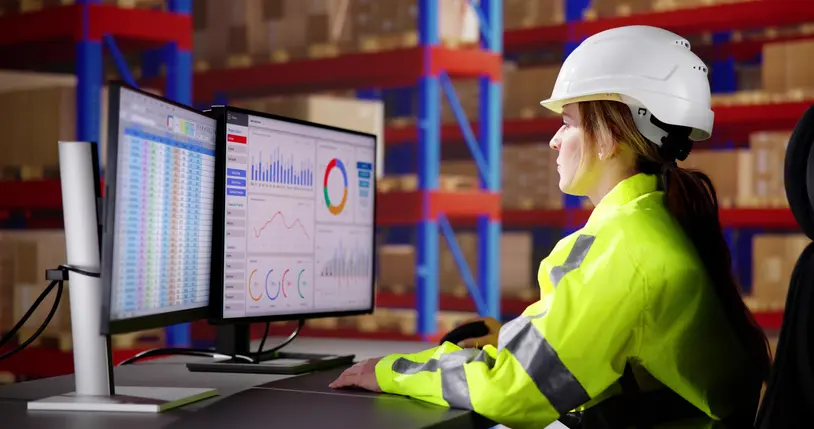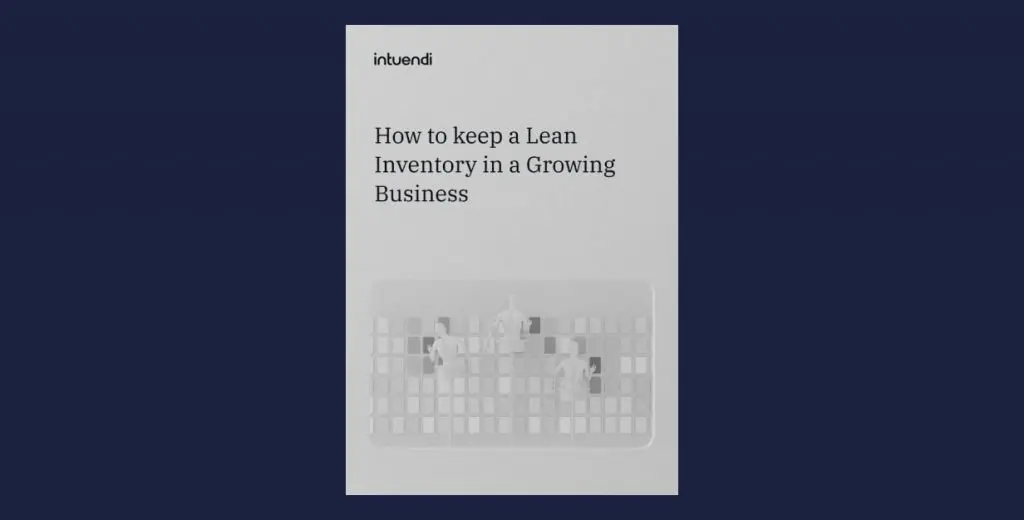Managing all aspects of a product or service, from procurement to sale, from finances to the flow of goods, has resulted in an entire industry being built – the industry of supply chain management and supply chain logistics. By effectively managing the flow of goods, information, and resources from suppliers to consumers, organizations can streamline processes, minimize costs, and optimize inventory levels, ultimately improving operational efficiency across the board. This article will be looking at what supply chain management is, how it works, as well as its basic components.
What Is Supply Chain?
So what does supply chain mean and what is the supply chain in business? The various supply chain steps move from procurement to sales, including the planning, logistics, and financial aspects that go along with it. Some of these features might include procurement, production, transportation, warehousing, inventory management, and customer service.
However, the supply chain’s responsibilities run deeper than the simple flow of goods – businesses should constantly be working towards optimizing these processes. Creating a smoother-running supply chain can result in minimized costs, improved operational efficiency, and enhanced customer satisfaction. Operational efficiency is further maximized when the collaboration among various stakeholders at different levels and phases of the supply chain is strong, and constantly reinforced.
Why Is the Supply Chain Important?
Your supply chain is basically a set of independent businesses connected together via the services or products that you sell. They should individually and/or collectively add value in order for you to sell them to your customers. Although the term, ‘supply chain management,’ can be dated back as far as the 80s, it is the last decade’s implementation of advanced AI technology and better practices that have cemented supply chaining as the most important aspect of a company.
The significant development within supply chain integration and supplier-buyer connection arrived during the 1990s when the supply chain, as we understand it now, was slowly established. A single-focus strategy geared toward competition is no longer sufficient when striving for company success. Instead, the success of a company now depends on its ability to collaborate within the supply chain. This has given rise to the need for supply chain management software like Intuendi to help you take full advantage of your supply chain.
Key Components of a Supply Chain
There are a number of key components that can be expected to be found across any company’s supply chain. These might include some of the previously mentioned steps such as planning, sourcing, manufacturing, delivery, and return or reverse logistics. Let us break these various components down into what they consist of, as well as their importance within the supply chain! This segment should also reiterate how much responsibility and importance lies within the supply chain.
Planning: Explained by its name, planning involves forecasting and determining the demand for products or services in order to be able to develop production schedules and establish inventory levels accordingly. Accurately forecasting demand helps organizations optimize their production and procurement activities, ensuring that the right amount of products or services are available at the right time. The knock-on effects of a strong planning phase are great, including minimized stock-outs or excess inventory through accurate inventory planning. This can further lead to reduced holding and waste costs and improved customer satisfaction from reliable and quick service.
Sourcing: Sourcing does not only deal with the procurement of raw materials, but identifying and selecting the suppliers providing these raw materials, negotiating their contracts, and managing and maintaining strong relationships with them, supplier chain, and the product supply chain. Suppliers should be evaluated based on criteria inclusive of quality, reliability, cost, and ethical practices. Once strong relationships are established, organizations are able to secure competitive pricing, ensure consistent quality, and reduce lead times – a major factor when selecting suppliers! These benefits are not benefits alone, as they further bring about risk mitigation, innovation, and contribution to the overall success of the supply chain.
Manufacturing: Another very literally-named step, manufacturing oversees the transformation of raw materials into finished products. This phase encompasses a range of activities such as production planning, scheduling, resource allocation, quality control, and process improvement. The implementation of lean principles and automation throughout the manufacturing process has additionally seen great results such as optimized productivity, minimized waste, and reduced production costs, allowing for a continuous improvement towards streamlined operations and increased competitiveness.
Delivery: Transportation and distribution of products to end customers are the two major facets of the delivery step. It is important to select the appropriate transport modes and logistics providers for the goods or services provided, all while ensuring that timely and accurate order fulfillment will be achieved. This is most often implemented through the selection of the best trade routes and optimized, efficient warehousing. Moreover, delivery also includes customer service and support post-sale and transaction, ensuring that customers receive the necessary assistance and addressing any issues promptly.
Retail and Customer Service: The previous components should culminate in providing a seamless shopping experience for your customer – a sale without any hiccups, backorders, or wastage. It is important that the supply chain flows as designed in order to provide customers with top quality products whenever that can adequately fulfil demand.
Return and reverse logistics: Should there be any returns, repairs, or recycling necessary after delivery has taken place, the return and reverse logistics step comes into play. Efficient reverse logistics processes facilitate the management of returned products, their proper disposition, and the processing of warranty claims. While the aim is to avoid this step, managing customer returns effectively is crucial for enhancing customer satisfaction without running into any unnecessary costs. This can also support sustainability initiatives, such as reducing waste and maximizing the value of the returned products.
Types of Supply Chains
Lean Supply Chain: As it might be implied by its name, lean supply chain aims to reduce waste, and therefore costs, through the elimination of non-value-adding activities. Lean supply chains may suffer from limited flexibility, however, they perform extremely well in focused optimization of procedures and minimized inventory levels.
Agile Supply Chain: Unlike lean supply chain, agile supply chain prioritizes flexibility, responsiveness, and adaptability to volatile market conditions. Managing agile supply chains is done in a responsive manner, with the ability to adapt to changes in customer demand, market trends, or supply disruptions. These supply chains emphasize real-time visibility, fast decision-making, and rapid reconfiguration of resources. However, this does come with the added cost of higher inventory levels and anything else that may need flexibility.
Responsive Supply Chain: A responsive supply chain focuses on responding to change in the usual environment, whether this involves adapting towards demand fluctuations or supply chain disruptions. Businesses that are more responsive in nature expect and prepare for more flexible sales expectations and delays. A responsive supply chain strategy proactively prioritizes the customers’ needs.
Green Supply Chain: In a world where global warming is a real threat and big corporations are worsening the state of our ecosystem, green supply chains strive towards sustainability and reduced environmental impact. It is characterized by maintaining operational efficiency while prioritizing reduced carbon footprint, sustainable sourcing, and waste reduction. (More on this later!)
learn more on different supply chain models in our dedicated article.
Challenges in Supply Chain Management
Supply Chain Disruptions: Supply chain disruptions could be caused by any issue occurring on any level – delayed raw material procurement, broken machinery, transportation traffic, and the list goes on. Because these issues can happen at any given time, within any tier of the supply chain, at any magnitude of scale, they pose a large threat to the integrity of the supply chain. It is, therefore, of utmost importance that the supply chain remains visible at all times, maintaining strong communication and constant optimization tactics.
Demand Forecasting: Deciding on the quantity to satisfy the expected demand for a certain product is one of the difficult steps of the decision-making process. Oftentimes, assessing the correct quantity of a product that may be sold over a range of market regions and customers is overlooked. These approaches weaken the supply chain, and make it vulnerable to impracticality and error-prone human judgment. Manual forecasting is unsustainable as it does not take into account both linear and non-linear trends over time. These may include seasonality factors and even exogenous variables that impact the forecasting quality (promotions, competition, holidays, weather, etc.). It is now more important than ever to invest in AI-driven demand planning software.
Visibility: With increasingly complex supply chains spanning over various countries and many different levels, maintaining visibility may not always be the easiest task at hand. Not having visibility of where products are within the supply chain can lead to major disruptions and dissatisfied customers. Inventory needs to be tracked, supplier’s performance needs to be monitored, and issues should be dealt with promptly – which is all very difficult to assess when there is a lack of visibility within and of the supply chain.
Sustainability in the Supply Chain
In recent years, the importance of sustainability in supply chain logistics has grown significantly alongside the major impact green initiatives have made in attempts to save our planet. It is no secret that supply chain activities have environmental and social impacts, however, there has been a call to address these concerns by being more eco-friendly in our business operations. Businesses are adopting sustainable practices throughout their supply chains, implementing green transportation strategies such as the use of electric vehicles, optimizing delivery routes, and adopting alternative fuel options. Other eco-conscious efforts being used to empower a more sustainable supply chain are waste reduction initiatives and carbon footprint management. These aim to minimize waste and promote recycling, all in attempts to reduce and offset carbon footprints. Along with an ecological responsibility comes a social responsibility, encouraging ethical sourcing that focuses on selecting suppliers that adhere to labor practices, human rights, and environmental standards.
Did you know Intuendi reduced its websites CO2 emissions by 30% last year? Read up on intuendi’s Karmametrix.
Risk Management in Supply Chain
In an age where we have experienced a global pandemic, natural disasters, and rife geopolitical tensions, disruptions and delays such as supplier disruptions, transportation delays, inventory shortages, and demand fluctuations have proven their ability to severely impact business operations and profitability. In the dynamic and uncertain business environment of today, supply chain resilience and risk management are of paramount importance.
Diversifying suppliers can enhance supply chain resilience through identifying and engaging multiple suppliers across different regions. Businesses are, therefore, able to reduce their dependency on a single source and mitigate the risk of disruptions. It is also helpful to begin developing contingency plans, where potential risks are mapped out, and alternative sourcing options are established. These response strategies will enhance supply chain resilience by creating a culture where disruptions are taught to be addressed swiftly before they have even begun.
Additionally, leveraging data and analytics provides valuable insights for proactive decision-making in times of distress. Real-time data analysis enables businesses to anticipate demand fluctuations, monitor supplier performance, optimize inventory levels, and identify potential risks in the supply chain, empowering them to make timely adjustments and mitigate potential disruptions before they occur, ultimately enhancing overall supply chain resilience.
Globalization and Supply Chain
Continuing the trend of literal naming, globalization within the world of supply chains refers to supply chains that expand over various countries, or even continents. There are many steps, and therefore many challenges, as well as opportunities, presented by globalization.
The supply chain steps, namely procurement, manufacturing, transportation, and distribution may occur in multiple geographical locations. Motivating factors behind the selection of where these steps occur might include cost, quality, and reliability. It is important that the resources provided in each venue align with the resources needed for the corresponding step to be executed seamlessly. A-grade logistics and transportation management are crucial for the success of international supply chains as visibility and a clear communication channel need to be maintained throughout, for quick response time, risk management, and overall operational efficiency.
Despite the complexity and risk of disruptions within global supply chains, challenges such as compliance and tax regulations differing from country to country could pose a serious threat to the integrity of the supply chain. Other barriers come into play when dealing with cross-country communication, such as differences in language and currency, which have the potential to majorly slow down the entire supply chain and its processes.
However, it does provide some great advantages. If this weren’t true, the rest of the world would not be experiencing the sweet grapes of the South African vineyards, the flavors, and spices of Indian cuisine, or the luxury and relaxation of Cuban cigars. Despite fostering a global culture of appreciation for different countries, ethnicities, and practices, global supply chains can enjoy lowered costs as each phase can take place within the most cost-effective location. More countries, and therefore, more people are able to explore the products of one company, providing a great competitive advantage, as it creates a global demand for a certain product.
Future Trends in Supply Chain
Technology is rapidly changing how companies operate. Manufacturing, Commerce, and many other industries of our economy require new skills and a new level of integration and automation for prompt reactions to demand changes in an ever-growing dynamic, and volatile market. This has forced businesses to design responsive and flexible supply chains, reducing the WIP (Work In Progress) and minimizing their operational costs. However, most importantly, a modern business must include data-driven decisions with real-time visibility into its processes.
All over the world, every day, a great amount of data is generated by companies, social networks, and information platforms. New and emerging technologies are mature enough to convert data assets into valuable actionable insights. Data-driven models can support decisions and strategies and can be used to optimize the production cycle, determine the minimal amount of inventory needed to satisfy the forthcoming demand, and much more.
Manufacturing companies need to address their supply chain strategies in order to optimize resources, maximize revenue, and meet the demand requests coming from the market. On the other hand, e-commerce stores’ competitiveness is based on minimizing store costs and maintaining short and predictable lead times in order to remain sales-ready. Stockout events do not only mean lost sales, but they frequently mean lost customers. Furthermore, if an on-demand sales supply model is adopted and no storing is made, minimizing the delivery time from suppliers to customers becomes vital for e-commerce stores.
New, smart, highly connected, automated, advanced Predictive Analytics technologies are the new era for Supply Chain operations: digital technologies make more efficient networked supply models come true. The modern digital supply networks are powered by Data Analytics, AI, and Machine Learning, which match the expectations for deriving a higher level of business value and return on companies’ digital high-tech investments.
Download our free guide on how AI demand planning software can help a growing business keep a lean inventory






